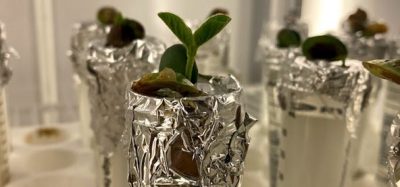Indian rainforests could hold a secret to getting more out of farm waste
- Like
- Digg
- Del
- Tumblr
- VKontakte
- Buffer
- Love This
- Odnoklassniki
- Meneame
- Blogger
- Amazon
- Yahoo Mail
- Gmail
- AOL
- Newsvine
- HackerNews
- Evernote
- MySpace
- Mail.ru
- Viadeo
- Line
- Comments
- Yummly
- SMS
- Viber
- Telegram
- Subscribe
- Skype
- Facebook Messenger
- Kakao
- LiveJournal
- Yammer
- Edgar
- Fintel
- Mix
- Instapaper
- Copy Link
Posted: 1 November 2017 | George Smith (New Food) | No comments yet
Microorganisms found in the wildfire-prone rainforests of India have caught the eye of research scientists as an exciting prospect for biochemical production.


The project, funded by the European Union and Indian Government, is looking at whether these rainforest organisms may be the key to boosting the efficiency of converting agricultural waste into biochemicals.
The researchers led by the VTT Technical Research Centre of Finland think this may be possible because the enzymes they produce are likely to have higher-than-normal resistance to the substances released from biomass in high-temperature industrial processes.
IndZyme, the project, is exploring whether these enzymes might be better than those currently in use.
Converting the lignocellulose in biomass into fermentable sugars and ultimately biochemicals with the help of enzymes requires first breaking down the tough lignocellulosic structure.
The technology already exists, but the inhibitors generated by the process reduce the effectiveness of the enzymes. Inhibitors are chemical compounds that prevent or hinder enzyme activity. Enzymes that are more resistant to inhibitors could help to lower enzyme costs and increase the sugar yield.
The Indian research partner in IndZyme, VINSTROM, has collected microbial cultures from wildfire-prone areas of Indian rainforests and proven that they have a higher-than-normal resistance to inhibitor chemicals.
During the project, these microbial cultures will be screened for new, more inhibitor-resistant cellulase enzymes as well as LPMO enzymes, whose activity may even be boosted by inhibitor chemicals.
The next step will be studying the efficiency of these new enzymes in breaking down agricultural waste, such as straw, into fermentable sugars. Their efficiency will be compared against the Trichoderma reesei enzymes, which are widely used in industrial applications, and enzyme mixtures.
The project will involve developing new enzyme screening methods and producing new information about compounds that inhibit or promote enzyme activity.
Special attention will be given to lignin-based phenolic compounds, which are released at high temperatures during the pretreatment of lignocellulosic materials. These compounds are strong inhibitors of cellulase enzymes but can act as electron donors and therefore increase LPMO enzyme activity.
Lignocellulosic agricultural waste is among the most common renewable biomass resources. In Europe, wheat straw is one of the most abundant agricultural waste products. India has ample stocks of bagasse, the fibrous matter that remains after sugar cane stalks are crushed to produce sugar, but it is currently disposed of by incineration, causing considerable local emissions.
The IndZyme project consortium consists of VTT (Finland), VINSTROM (India), RWTH (Germany) and the University of Tartu (Estonia). VINSTROM will screen the microbial cultures, after which VTT will analyse them for the enzymes they produce. RWTH will fraction the inhibitor compounds generated by biomass processing, after which VTT and the University of Tartu will characterise the enzymes and study their interactions with inhibitors. The project is part of the EU’s Inno Indigo programme, which aims to increase research cooperation between Europe and India.
The three-year project is coordinated by VTT, and its total budget is approximately EUR 1 million. VTT and the Academy of Finland have allocated a total of EUR 400,000 towards the project (VTT 70 per cent, Academy of Finland 30 per cent). The project coordinator is VTT’s Research Professor Kristiina Kruus.
Related topics
Related organisations
European Union, IndZyme, VINSTROM, VTT Technical Research Centre of Finland









